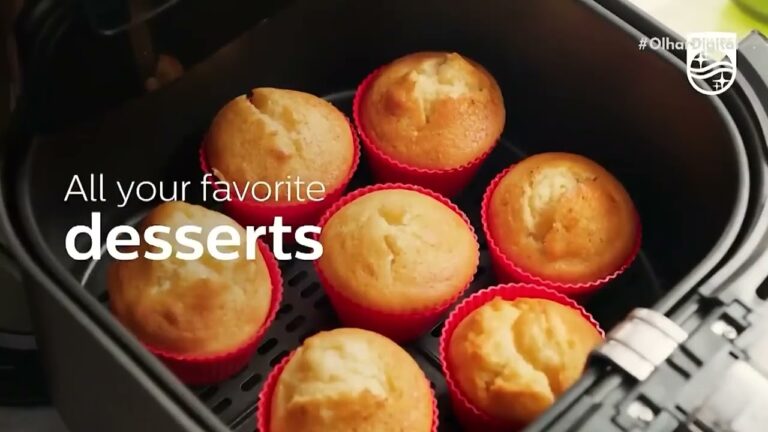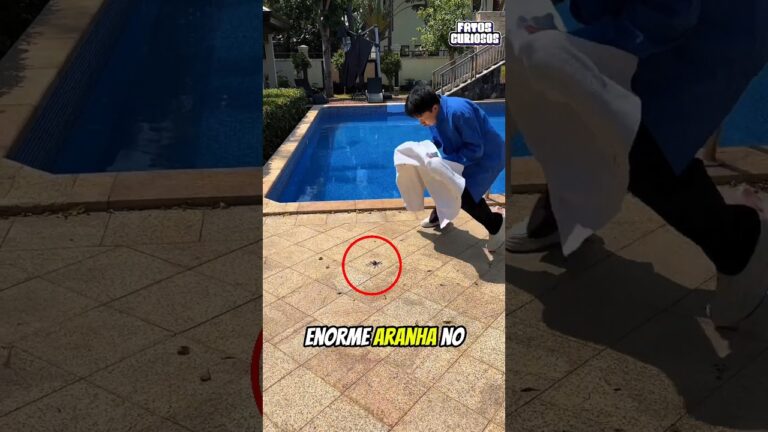Como é FEITO o BOTIJÃO de GÁS #Boravê
I don't know about you, but I've always been very curious about the gas cylinder. So much so that in Manual do Mundo we already cut it in half to see what's inside Because we have this thing in the kitchen, it's full of flammable gas inside, and It has to be extremely safe. So, today, we came to a factory to understand how it is made. The bottle basically consists of five large parts and three small ones. I'll set it up for you to see. The lower handle, which is its base, the lower dome, The upper dome, the upper handle, which is where we pick it up, and the flange. On The flange goes the valve, which is where the gas comes out, the safety plug, which Is a fire protection that we already showed in Manual do Mundo, and a tare plate That shows how much the cylinder weighs empty. The most common bottle is the P13 Because it can carry 13 kg of gas, but here they also produce other gas cylinders, Which is the technical name given to these bottles. Each of them needs a specific Design, depending on the substance it will store. In the bottles we have at home, It is usually LPG, which is liquefied petroleum gas. Yes, you heard right, liquefied Because inside the bottle it becomes liquid because of the pressure. And because of that, we can save a lot more material. In addition to the physical Challenges of storing gases and liquids, gas bottles must pass a series of safety Standards. And all of this is guaranteed at this stage of production. In the design, each of these parts here will become reality on the production line. The main raw material is steel. And it arrives in these coils that can weigh up to 12 tons. And it happens in a similar Way to when you buy rolled up cardboard. When the coil is unrolled, the steel will be curved. To fix this, the material will go through the planing line. There are several cylinders that unbend the steel and then this plate will be cut By super powerful presses that have a kind of knife at the end, as if it were that Little mold for cutting cakes. Here, circles and rectangles will be formed that will become the body of the bottle. The distributors' marks, registration numbers, are also marked using presses. And at the end of the process, they check the measurements to see if everything is right. These circles will now pass through a hydraulic forming press. They receive a little oil and then the machine presses until it forms half of the Body of the bottle, as if it were half an Easter egg. The rings need to go through a calender, which is a type of press that bends the part to form a ring. Afterwards, it receives a weld on the seam and, in the sequence, a fold forms that
Little loop that makes the piece more ergonomic for us to pick up. For the flange, the process is different. This is where the valves go, so it has A thread that is machined inside the part. To join the two parts, they need to make A kind of fitting. So, the top part goes through a cut and the bottom part goes Through a beading machine, which makes a bead, which is this kind of bump. The parts Will all be joined using a type of MIG MAG welding, where a wire is melted using An electric arc and, at the same time, a gas, which can be a mixture of carbon dioxide And argon, is thrown on top to protect the bead that is formed to not give any defect In the weld. First they weld the ends and the flange, and then the two halves are Fitted together at the end in what is known as a circumferential weld. The bottle is almost ready and here all the parts will undergo an inspection to check everything is right. It seems like like the cylinder is practically ready, just apply a spray and everything Is done, but no, it still needs to undergo a thermal treatment called annealing, or stress relieving. In this process, each bottle is heated to 650 degrees Celsius and then cooled. This has to be done because in the weld some tension points are created in the steel Structure, and these points can become brittle. Heat treatment will cause the acid to reorganize itself and be free of these stress points. To find out if the annealing actually worked, several tests are carried out in which The bottle is taken to the limit. A mechanical test where the steel is stretched Until it breaks, a water jacket test to see if the flexibility of the cylinder is Working and also a burst test, which is literally filling until the cylinder explodes. Let's see this now. What noise is this going to make? Let's see how it turned out. Wow! It turned into a ball. And it cracked over here. We can see through the water coming out. When it burst, I wasn't looking at the clock there anymore, but it was more than 80 times the atmospheric Pressure, that is, it's more than five times what it needs to withstand in our house. Here the pressure is in bar, how many times the atmospheric pressure is inside the cylinder. It's close to the time it usually breaks… I felt the rain here on top of me. The cool thing is that it has a pattern, it's always more or less the same point. If an exploding gas cylinder isn't worth a thumbs up, I don't know what's worth a thumbs up. Cylinders cannot be painted straight out of the oven because they are full of residue
On top. If you look closely, you can see it. It's a bit dirty, so they'll go through A machine that sprays steel grit, it's a little steel powder, it looks like sand, which will clean the cylinder. Of course, we can't see it up close because the process is very violent, but the grit is here, look. Look how beautiful, it came out clean here on the other side and the surface is already a little rough to receive the paint. The painting will take place in layers, first comes an anti-corrosive background that Is applied by immersion, that is, cylinders are immersed in a tank. Then comes two more layers, one of primer and another of enamel paint. They are usually the same color, blue, yellow, silver, green… At the end, these Layers are cured, they are dried in an oven at 150 degrees Celsius. It's time to put the safety plug in. It's a screw that has a bismuth alloy inside. Bismuth is a metal that melts very easily, so if there's a fire, this here will melt And let the gas escape. And that's what guarantees that the cylinder will never Explode in a fire. Soon after, they will do a pressure test on each of the cylinders. For this, high pressure water is injected. As a rule, cylinders need to withstand 17 times the atmospheric pressure, but here They put 34 times and there can be no leaks. This test needs to be done with water Because, if it were with air, there would be a risk of the cylinder exploding in The leak. Not with water. If it has any defects, it will only leak a little water. To place the valve, they first apply a sealant, the piece is fitted and then tightened with a torque wrench. It is a tool that guarantees that the force is always placed in the right measure. To make sure the valve doesn't have any leaks, they'll pressurize the plug once more With compressed air and immerse it in a tank they call a big pool, then you can see if any air bubbles will come out. I hadn't attempted a deal, but they told me here. The gas cylinder filled with air does not sink. How does it get in there? There's a magnet under the mat, so if I try to lift the cylinder here, I can't because It's stuck in the magnet. After this test, it is still necessary to remove the compressed Air that was inside, otherwise the gas will not enter. Then, the cylinders are weighed. They all have to be between 13.5 kg and 14.5 kg. They check it on the scale and then put a tare plate to inform the weight of the cylinder. And this here is the end of the production process. The most common cylinders will have the weight we mentioned, between 13.5 kg and 14.5 Kg. But here they also developed another cylinder that also has this capacity of 13 kg of gas inside it, but it is much lighter. It weighs between 8.5 kg and 9.5
Kg empty. This will make transportation much simpler, cheaper and, at home, the cylinder is also much easier to carry. It's kind of magical, it feels like I got 4 kg stronger here. From here, the cylinders will be loaded onto caged trucks and sent to the gas distributors. They are the ones who will put the LPG in here and send it to the homes of millions of Brazilians. When the gas runs out, they go back to the distributors to be refilled in a cycle That, if the cylinder is well taken care of, can last more than 40 years. So, the next time you see the gas truck passing by on the street, you will remember The work that went into making a product that is safe for you to use in your kitchen. Look at the gas! Check it out, if you liked to see how the gas plug is made, you will also like to see how the aluminum can is made. We had to travel to two different states to understand the process.





 #short #shorts #viral #comedia #comedy #video #tiktok
#short #shorts #viral #comedia #comedy #video #tiktok

